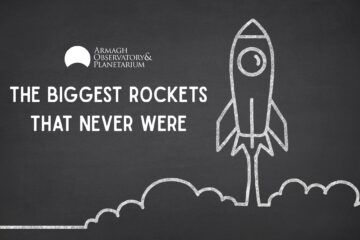The good news first: a major aerospace contractor is researching how to build a reusable spaceplane that could dramatically cut the cost of accessing low Earth orbit. Now the bad news: it is purely for military users and cannot carry people.

The XS-1 booster descending to Earth after releasing its upper stage. The expendable upper stage was carried on the spaceplane’s back. (Image credit: Northrop Grumman)
Aerospace giant Northrop Grumman has won a completion to research the feasibility of developing a reusable launch vehicle capable of “aircraft-like operations” (meaning it can be quickly and easily prepared for a mission and does not need a huge and elaborate launch pad). A vehicle like this could slash the costs of placing satellites into orbit to a tenth of today’s values. The contest for the contract was on behalf of the Defense Advanced Research Projects Agency (DARPA), the Pentagon’s high technology thinktank.
Northrop Grumman’s proposed XS-1 is a reusable spaceplane which acts as a booster for an expendable upper stage that could place a 3000 lb (1360 kg) satellite into low Earth orbit. It must be able to do this 10 times in 10 days with a small ground crew and modest infrastructure. The booster would take off from a mobile platform, a transporter erector launcher, ascend to high altitude to release the upper stage and return to land on a runway. It would do this entirely autonomously, without human intervention.
The company has been given 13 months and $3.9 million to show that this can be achieved using existing technology. If the research is successful it may lead to a follow on contract to build the vehicle. Northrop Grumman’s research will be aided by its subsidiary company Scaled Composites and also Virgin Galactic. Scaled composites and Virgin Galactic are respectively the builder and future operator of the SpaceShip Two high altitude tourism aeroplane, a craft of which much has been promised over the years (Virgin Galactic’s Richard Branson claimed in August 2014 that SpaceShip Two will carry passengers, including himself, before the end of 2014, this is is the latest in a series of similar statements, none of which have come to pass).
Today’s commercial airliners are largely based on technology developed for Cold War bombers in the 1940s and ‘50s. Perhaps history will repeat itself. I hope the XS-1 does prove viable and is developed into an operational vehicle. If it does, it is sure to lead to civilian versions opening up space to more users. That can only be a good thing.
(Article by Colin Johnston, Science Education Director)

0 Comments